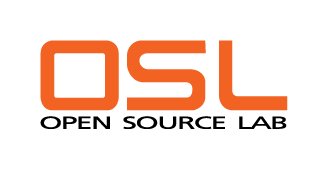IPv6
Overview
Internet Protocol version 6 (IPv6) is a network layer protocol for packet-switched internetworks. It is designated as the successor of IPv4, the current version of the Internet Protocol, for general use on the Internet.
Although native IPv6 connectivity is not available from any service providers in the Portland metropolitan area, it is still possible to obtain addresses and routes to the IPv6 Internet by using either the ["6to4"] system or a TunnelBroker.
Goals
There are several reasons this is being done:
Leading-edge technology - IPv6 is probably the most advanced network protocol available. If you're into that sort of thing, it's pretty frelling cool.
Address space - Since they are carved out of a carefully planned 128-bit space rather than the ancient 32-bit space of IPv4, global-scope IPv6 addresses are much easier to come by than their dotted-quad counterparts.
In IPv4, a global-scope 8-bit subnet (/24 in CIDR notation; up to 254 hosts) is virtually impossible to obtain. Even large companies are often forced to make do with only a single address or a tiny subnet of 6 bits or less; individual addresses are frequently sold for $10/month or more.
In contrast, IPv6 providers generally hand out a global-scope 64-bit subnet (/64 in CIDR notation; up to 2**64 == 18,446,744,073,709,551,616 hosts) by default for each site. Many providers also offer a global-scope 80-bit subnet (/80 in CIDR notation; up to 2**80 == 1,208,925,819,614,629,174,706,176 hosts). Even a massive allocation such as that would generally be provided free of charge.
- As a result of this improvement, the need for NAT is virtually eliminated.
Improved performance - Although it is often true that IPv6 introduces slightly more overhead than IPv4, primarily due to the presence of larger source and destination addresses in packet headers, there are exceptional cases where the elimination of IPv4 cruft can actually improve matters.
Availability - ["6to4"] is far from ideal; TunnelBroker connections tend to be unreliable and often suffer from high latency. These problems could be reduced or eliminated by the deployment of IPv6 over ["PTPnet"].
Status
All CoreServer systems are accessible via IPv6 and a few nodes currently provide IPv6 service. A list is available on the ["IPv6Addresses"] page.
Currently, work is being focused on building and testing infrastructure which will eventually simplify the process of configuring many more nodes for IPv6 service.
Services
Servers
At this point, all services on CoreServer systems should be available over IPv6 just as they are over IPv4. Please contact the NetworkOperationsTeam if you notice anything that is not working correctly with both IP versions.
Nodes
Automatic configuration
All nodes which claim IPv6 support should listen for router solicitations and send router advertisements, providing IPv6-capable neighbors with the information necessary to automatically configure themselves. After automatic configuration is completed, global IPv6 connectivity should be available immediately.
Only global-scope prefixes should be advertised. Although it should be quite harmless to announce ULA prefixes or other differently-scoped prefixes in addition to at least one global-scope prefix, such announcements are almost certainly superfluous and have the potential to confuse users who are new to IPv6. Extra prefixes also have the potential to cause problems on systems which are not using up-to-date IPv6 implementations.
DHCPv6 service should also be available on the network, to provide DNS server addresses to IPv6-only clients.
Captive portals
The majority of services on nodes should handle the transition just as smoothly as the services on the CoreServer systems, but there is at least one notable exception: NoCatAuth does not currently include any IPv6 support whatsoever. IPv6 traffic will likely be completely ignored by captive portals.
Links
General information:
[http://en.wikipedia.org/wiki/IPv6 Wikipedia article on IPv6]
Handy tools:
[http://www.ipv6.org The IPv6 Information Page] - Test IPv6 connectivity. The page displays your source address, IPv4 or IPv6.
Some IPv6 projects:
[http://www.kame.net/ KAME]
[http://www.wide.ad.jp/ WIDE]
[http://www.tahi.org/ TAHI]
[http://www.linux-ipv6.org/ USAGI]
CategoryGlossary CategoryDocumentation CategoryEducation CategoryMan CategoryNetwork CategoryDamnYouKeegan

